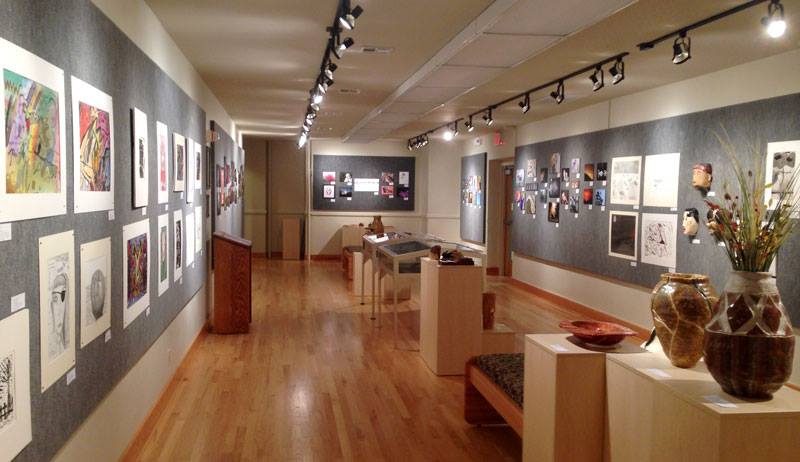Hendershot Gallery

Hendershot Gallery is a multi-functional area that accommodates a wide range of cultural, intellectual, and social activities and events designed to enhance the quality of campus and community life. The mission of the Gallery is to serve Labette Community College students and residents of Southeast Kansas by promoting personal enrichment and lifelong learning.
The history of Hendershot Gallery is linked to the space the gallery adjoins: Thiebaud Theatre.
Designed in 1925 as a lobby for the auditorium/theatre of the new Parsons Junior High School, the gallery served as an entrance to the sometimes theatre, sometimes lecture hall. Although the theatre boasted a proscenium arch stage, a balcony, and large arched windows similar to those in the Parsons Municipal Auditorium, the lobby itself was undistinguished.
In 1962, Parsons Junior college moved from its location on Main Street to the building that had been the Junior High for almost 40 years; 200 south 14th.
However, it was not until 1972-1973 that extensive renovations took place. Those renovations included Thiebaud Theatre and its lobby. With the help of speech/theatre instructor Ed Hendershot and art instructor Dan Staten, both spaces were transformed.
Gone were the theatre's windows and balcony seating. Gone were the narrow, wooden seats and the faded curtains. A new thrust stage, a catwalk, a new seating arrangement, as well as new dressing rooms and light booth took their place.
The lobby, too, received a much-needed facelift. The ceiling was lowered, tract lighting was installed, and carpeted wall panels were added.
In 1989, searching for a suitable way to honor Ed Hendershot, the college dedicated the space in his memory, and it became Ed Hendershot Gallery.
Additional updating of the facility took place in 1997 as the facility was readied to display the LCC Art Collection, which had recently undergone its own restoration.
And, in 1999, thanks to a grant from the Parsons Community Foundation, the gallery received its newest addition; a security and a climate control system now make possible a wider range of humanities-related exhibits.

